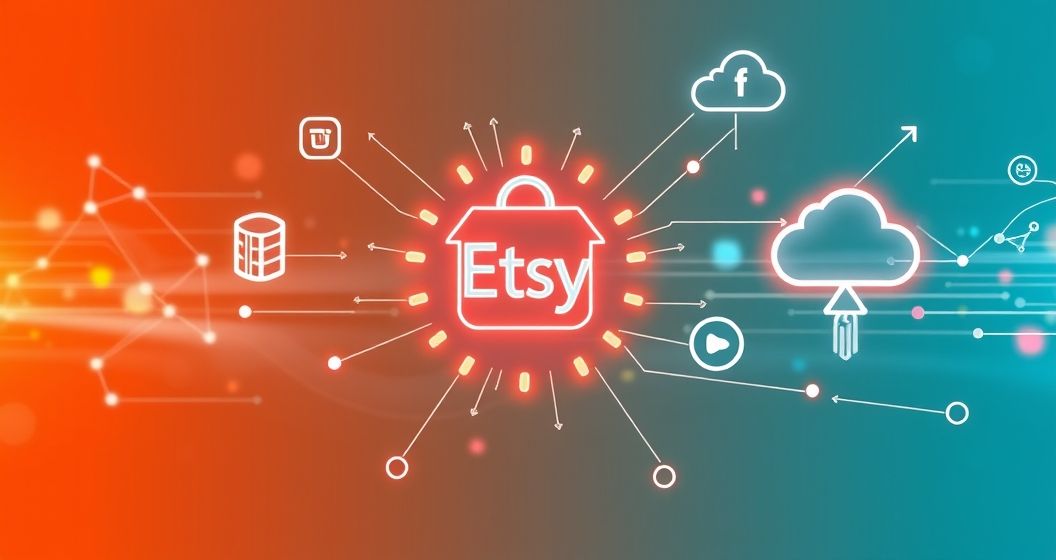For many artisans and small business owners, Etsy serves as a vital platform for showcasing unique products to a global audience. However, managing an Etsy shop effectively often requires more than just listing items. Integrating third-party tools can significantly enhance operational efficiency, streamline workflows, and ultimately drive business growth. These integrations connect your Etsy store with various services, from inventory management to shipping and accounting, creating a more cohesive and automated selling experience.
Understanding Etsy Integrations for Enhanced Selling
Etsy integrations refer to the process of linking your Etsy shop with external software applications or services. This connectivity allows data to flow seamlessly between your store and these tools, automating tasks that would otherwise require manual input. By leveraging these powerful connections, Etsy sellers can improve their productivity, reduce errors, and focus more on creativity and customer engagement. Strategic integration is key to scaling an Etsy business without being overwhelmed by administrative duties.
1. Streamlining Inventory Management Across Platforms
Effective inventory management is critical for any Etsy seller, especially those selling on multiple channels. Integrating an inventory management system with your Etsy store helps prevent overselling and ensures accurate stock levels. These systems automatically update inventory counts across all your sales platforms whenever a sale occurs or new stock is added. This synchronization saves time, minimizes potential customer dissatisfaction due to out-of-stock items, and provides a clear overview of your product availability at all times.
2. Optimizing Shipping and Fulfillment Processes
Shipping logistics can be a complex and time-consuming aspect of running an Etsy shop. Integrating shipping solutions can drastically simplify this process. Tools like ShipStation or Pirate Ship connect directly to your Etsy orders, allowing you to generate shipping labels, compare carrier rates, and track packages efficiently. This integration often results in discounted shipping rates, automated tracking notifications for customers, and a significant reduction in the manual effort required for order fulfillment, improving overall seller efficiency.
3. Automating Financial Tracking with Accounting Integrations
Managing finances is a non-negotiable part of any successful Etsy business. Integrating accounting software such as QuickBooks or Xero with your Etsy store automates the recording of sales, expenses, and other financial transactions. This eliminates the need for manual data entry, reduces the risk of errors, and provides real-time insights into your business’s financial health. Accurate financial records are essential for tax season, budgeting, and making informed strategic decisions for your Etsy business.
4. Boosting Reach with Marketing and Social Media Integrations
Promoting your Etsy products effectively is crucial for attracting new customers and retaining existing ones. Marketing integrations allow you to connect your Etsy listings with various promotional channels. This can include email marketing platforms for sending newsletters about new products or sales, or social media scheduling tools for automatically posting your latest items across different platforms. Such integrations extend your reach beyond Etsy, driving more traffic to your shop and enhancing overall brand visibility and customer engagement.
5. Expanding Product Lines with Print-on-Demand Integrations
For sellers interested in offering custom designs without managing physical inventory, Print-on-Demand (POD) integrations are invaluable. Services like Printful or Printify connect directly with your Etsy shop, allowing customers to order your designs on various products such as apparel, mugs, or home decor. When an order is placed, the POD partner handles printing and shipping directly to the customer. This model minimizes upfront costs, reduces inventory risk, and enables sellers to quickly diversify their product offerings on Etsy.
6. Enhancing Customer Relationships with CRM Integrations
Building strong customer relationships is fundamental for long-term success on Etsy. Customer Relationship Management (CRM) integrations can help manage customer interactions, track purchase history, and personalize communication. While Etsy has its own messaging system, dedicated CRM tools can offer more advanced features for follow-ups, managing customer feedback, and segmenting your audience for targeted marketing efforts. This leads to improved customer satisfaction, repeat purchases, and a stronger brand loyalty for your Etsy shop.
7. Gaining Deeper Insights with Advanced Analytics Tools
While Etsy provides basic analytics, integrating with more advanced reporting tools can offer deeper insights into your shop’s performance. These tools can track specific metrics, identify trends, and analyze customer behavior beyond what is available natively. Understanding which products perform best, where your traffic comes from, and how customers interact with your listings empowers you to make data-driven decisions. This strategic analysis can optimize your listings, marketing efforts, and overall Etsy growth strategy.
8. Managing Multiple Channels with Multi-Channel Listing Tools
Many Etsy sellers expand their reach by selling on other e-commerce platforms like Shopify or Amazon. Multi-channel listing tools integrate with Etsy and these other platforms, allowing you to manage all your product listings, orders, and inventory from a single dashboard. This prevents manual duplication of effort, ensures consistency across all channels, and significantly simplifies the complexities of managing a diverse online retail presence. Such integration is essential for seamless business expansion.
Strategic Integration for Etsy Sellers: A Comprehensive Evaluation
Choosing the right Etsy integrations is a strategic decision that can significantly impact the efficiency and profitability of your business. By thoughtfully selecting tools that address specific operational needs, sellers can automate repetitive tasks, reduce errors, and gain valuable insights into their performance. The goal is to create a cohesive ecosystem where different tools work together seamlessly, allowing sellers to dedicate more time to creativity and customer engagement, fostering sustainable growth and long-term success for their Etsy ventures.






